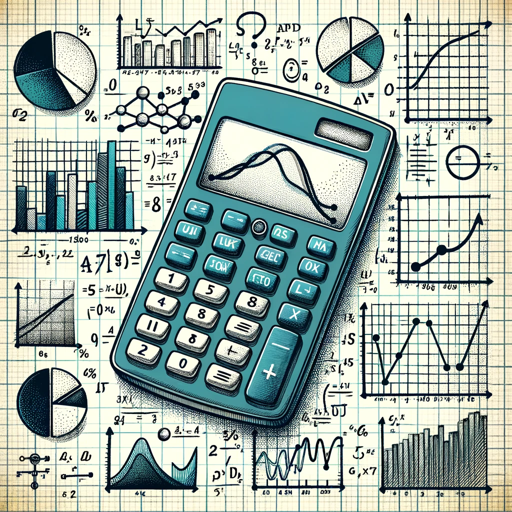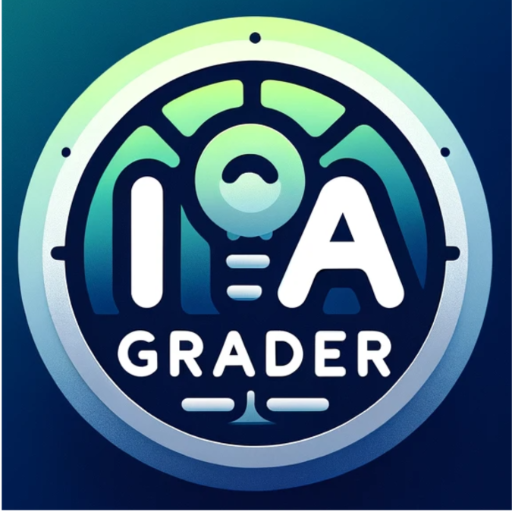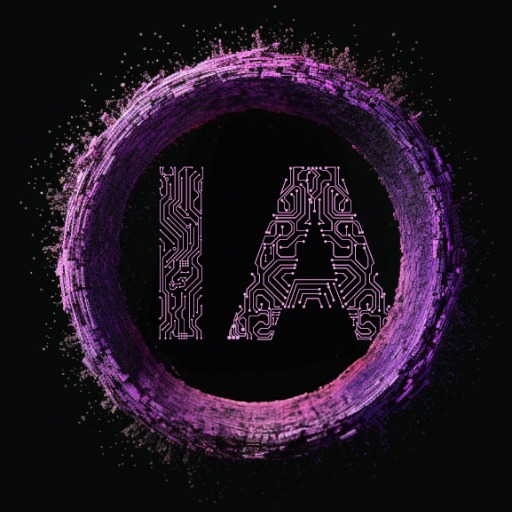Maths IA Guide-AI tool for IB Maths IA guidance
AI-powered guide for IB Maths IA success
How do I improve my personal engagement in Maths IA?
Can you explain the reflection criterion in Maths IA?
What are common pitfalls in Maths IA?
How should I organize my Maths IA exploration?
Related Tools
Load More
IBgrad
Your IB LifeSaver

IB Economics IA Assistant
Helps with IB essays and projects, reads websites and PDFs, advises on structure and content.

IB Economics Guide
Expert in IB Economics, provides visuals for clarity

Math IA
Guides IB students on writing Math IA, including stock price prediction using regression models.

IBDP IA Grader-GPT(IB Diploma IA)
An IBDP IA Grader GPT, designed to assist with Accurate grading Internal Assessments for the International Baccalaureate Diploma Programme.

IB Math AA HL Chad Mentor
Your Math AA HL IA guide
20.0 / 5 (200 votes)
Introduction to Maths IA Guide
The Maths IA Guide is specifically designed to assist students working on their International Baccalaureate (IB) Mathematics Internal Assessment (IA). It functions as a comprehensive support system for understanding and applying the IA assessment criteria, providing personalized guidance to maximize students' scores across the five key assessment criteria: communication, mathematical presentation, personal engagement, reflection, and the use of mathematics. For example, when a student is unsure how to reflect on the impact of their exploration, the Maths IA Guide offers tailored feedback on how to critically evaluate the mathematical concepts, ensuring the reflection aligns with the rubric requirements.

Key Functions of the Maths IA Guide
Understanding IA Rubric Criteria
Example
Students often struggle to comprehend how their work will be assessed. The guide breaks down each criterion, explaining what is required for full marks. For example, under the 'Mathematical Presentation' criterion, the guide helps students understand how to use appropriate mathematical language, symbols, and diagrams, aligning with expectations like those outlined in the IA rubric.
Scenario
A student working on a calculus-based IA is unsure whether their use of graphs and formulas is sufficient for high marks. The guide reviews the IA rubric and provides feedback to ensure the mathematical presentation is both accurate and clearly communicated.
Guidance on Structuring the Exploration
Example
Many students struggle with organizing their IA. The Maths IA Guide assists by helping students create a coherent structure, from the introduction to the conclusion. This includes guidance on presenting a clear rationale and aim, and organizing content in a way that is easy to follow, as per the Communication criterion.
Scenario
A student has chosen to explore statistical models in sports but is unclear on how to structure their exploration logically. The guide provides step-by-step advice on structuring sections, ensuring that the exploration has a logical flow and meets the IB criteria for organization and coherence.
Enhancing Personal Engagement
Example
Personal engagement is one of the most challenging criteria to fulfill. The Maths IA Guide encourages students to think creatively and find ways to make the IA their own. For example, by suggesting ways to link the topic to their personal interests or unique mathematical interpretations.
Scenario
A student working on a topic related to economics is unsure how to show personal engagement. The guide suggests integrating their own experience with economics and incorporating creative approaches, such as comparing economic models from different countries they have a personal connection to, thus making the exploration more personalized.
Ideal Users of the Maths IA Guide
IB Students Preparing for Maths IA
The primary target group is IB students who are working on their Mathematics Internal Assessment. These students benefit from the guide by receiving detailed, personalized feedback that helps them align their exploration with the IB criteria, improving their chances of achieving higher scores. The guide is especially useful for students who are uncertain about how to apply complex mathematical concepts within their IA or struggle with structuring their work.
IB Mathematics Teachers
Another group that benefits from the Maths IA Guide is IB mathematics teachers who are supporting students in their IA preparation. Teachers can use the guide to better understand how to provide targeted advice to students, especially in areas like reflection and personal engagement, where assessment can be more subjective.

How to Use Maths IA Guide
Visit aichatonline.org for a free trial without login, also no need for ChatGPT Plus.
Access the Maths IA Guide without requiring an account or paid subscription.
Prepare your Maths IA draft or exploration topic.
Make sure you have a rough draft, outline, or topic idea ready for feedback.
Ask detailed questions about your Math IA.
Inquire about different aspects such as rubric criteria, mathematical presentation, and reflection for focused guidance.
Incorporate feedback and refine your IA.
Use the insights provided to improve communication, personal engagement, and mathematical depth.
Review key assessment areas.
Regularly check the exploration’s coherence, organization, and reflection as you edit and finalize your IA.
Try other advanced and practical GPTs
Consultas Curso IA JON
AI-powered course navigator for easy learning.

胡锡进
AI-powered strategic analysis and political insight.

我说你画
Bringing Chinese Idioms to Life with AI

Resume Match
AI-Powered Resume Optimization

Human Resources Advisor
AI-powered solutions for effective HR

Personal Assistant
AI-Powered Personal Task Mastery

Jenny l'Assistante MJ V6
AI-powered prompts for stunning visuals.
Meu Assistente de IA para Advogados
AI-Powered Legal Assistance for Professionals

UX Mentor
AI-powered tool for UX mastery.

Client Avatar Creator
AI-powered Client Avatar Creation
iHeartDogs & iHeartCats Copywriter
AI-powered copywriting that connects and gives back.

Insta Side-Biz Supporter
AI-powered Instagram business assistant

- Mathematical Analysis
- Rubric Interpretation
- IA Structure
- Reflection Guidance
- Engagement Enhancement
Common Q&A about Maths IA Guide
How does the Maths IA Guide help me improve my IA?
It offers detailed feedback on key areas such as communication, mathematical presentation, personal engagement, and reflection, helping you align with the IB criteria for higher scores.
Can Maths IA Guide assist with the structure of my exploration?
Yes, it provides suggestions on how to structure your exploration coherently, including tips for clear introductions, rationales, and conclusions, ensuring your work is logically developed.
How do I know if my mathematics is appropriate for the IA?
The guide checks the level of mathematics used and ensures it aligns with IB standards, advising if the mathematical content is commensurate with your course level and relevant to your topic.
Does it help with using proper mathematical language?
Absolutely. The guide ensures that you use appropriate mathematical notation, symbols, and terminology, and suggests ways to enhance communication through charts, graphs, and formulae.
Can the guide help with the reflection part of my IA?
Yes, it encourages critical reflection throughout the exploration, helping you analyze and evaluate your findings effectively, which is crucial for scoring well in the reflection criterion.